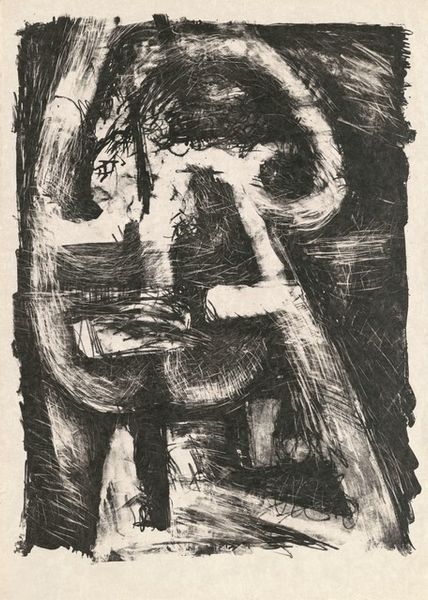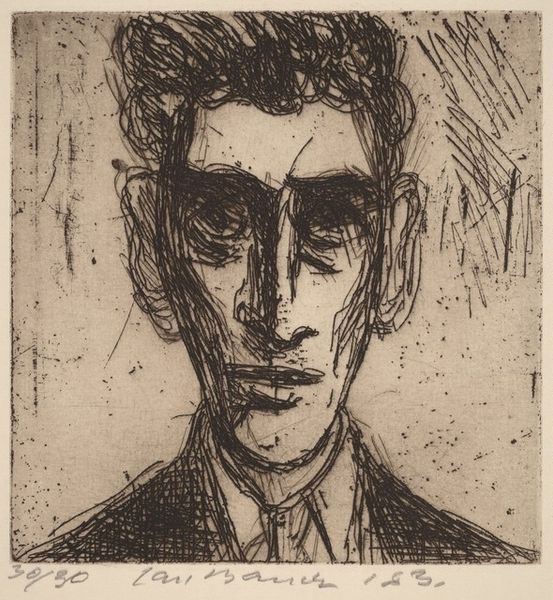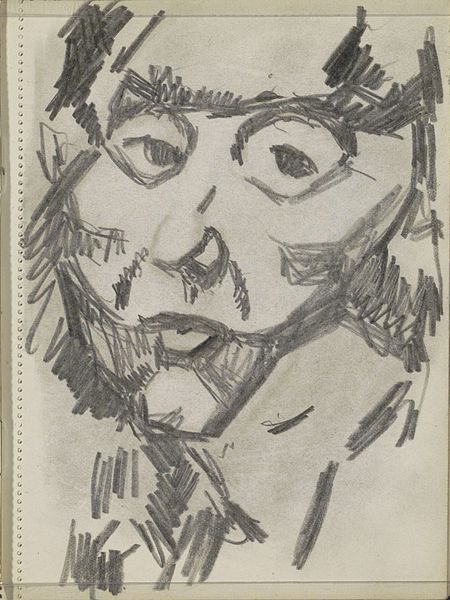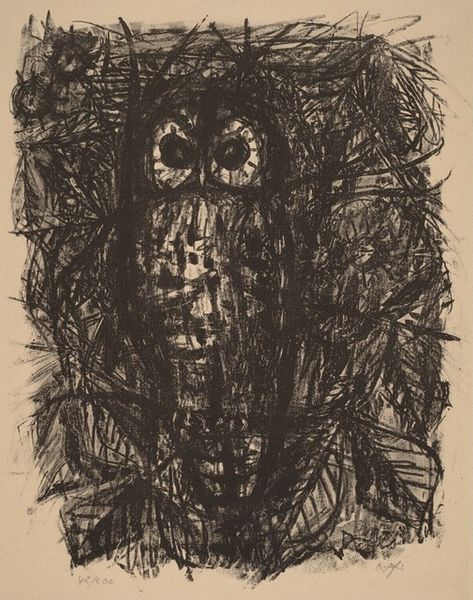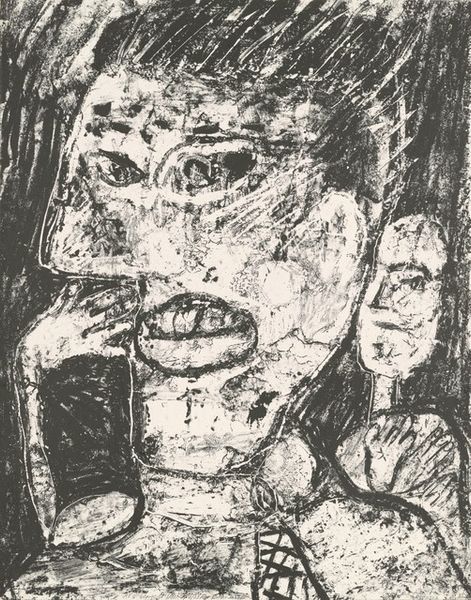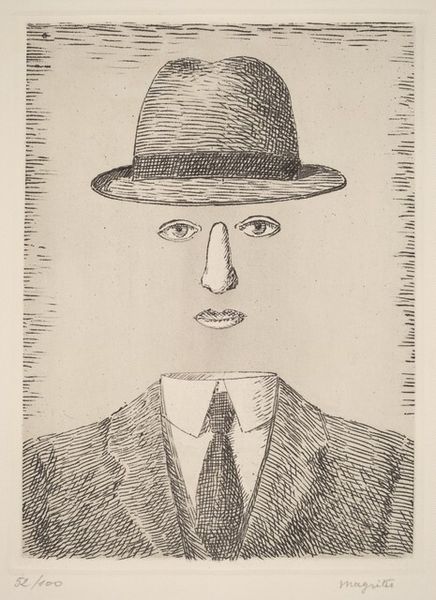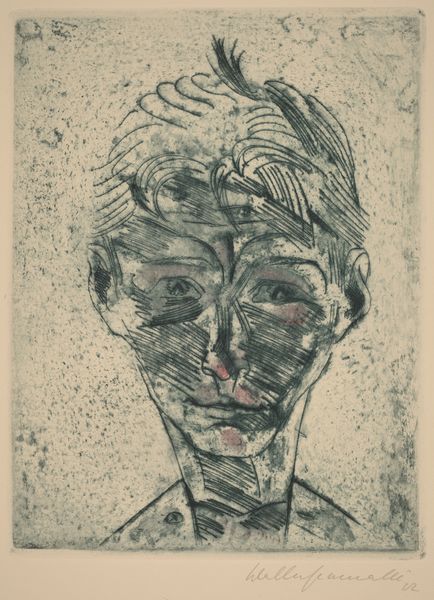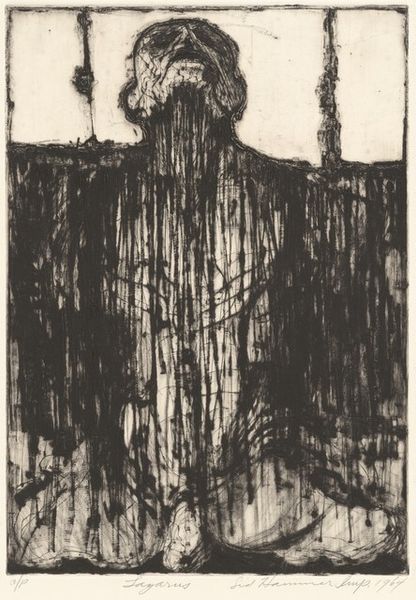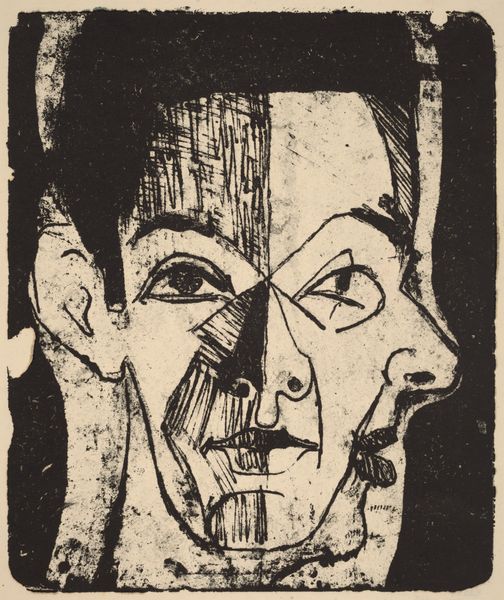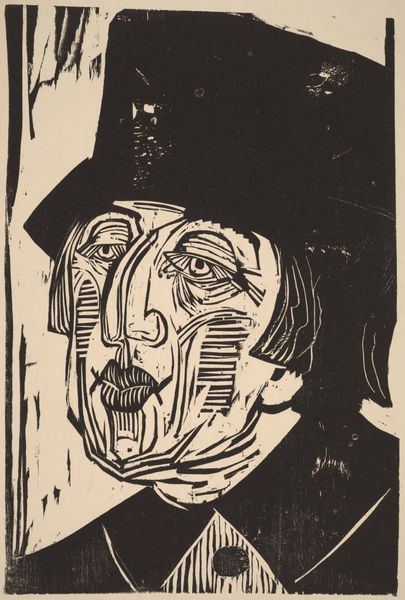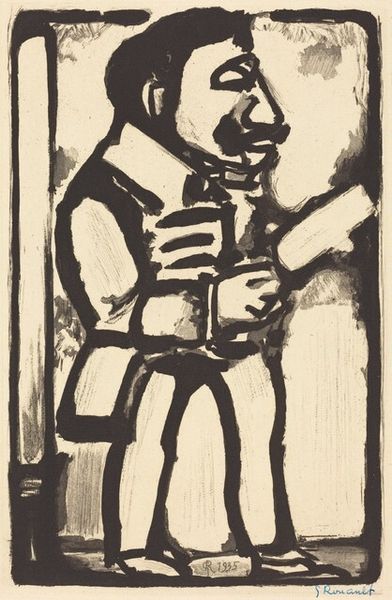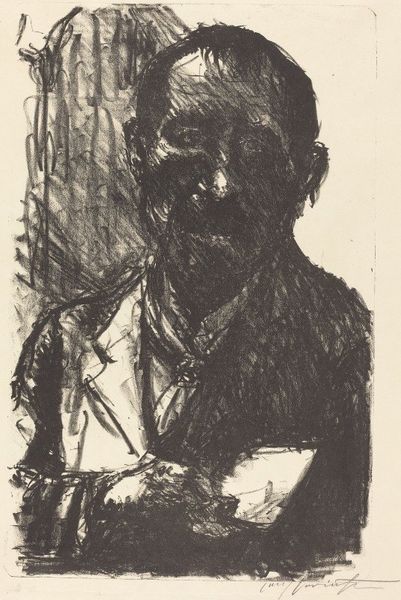
Copyright: National Gallery of Art: CC0 1.0
Editor: Here we have Anatoli Kaplan's "The Rich People of Yehupetz," a print made with ink, dating from between 1957 and 1961. The scratchy, almost chaotic line work creates a somewhat unsettling atmosphere. How do you interpret this work? Curator: That sense of unease you're picking up on is key. Considering the historical context, Kaplan, as a Jewish artist working in the Soviet Union during a period of subtle, yet persistent, antisemitism, used art to explore Jewish identity and cultural memory. Yehupetz was a Yiddish term, often used ironically, to describe a certain kind of nouveau riche Jewish community. Editor: So, the "rich people" weren't necessarily wealthy in the traditional sense? Curator: Exactly. Think about it politically. Kaplan's work might be a commentary on assimilation, cultural loss, and the compromises made in the face of political pressures. Do you see how the central figure seems both present and alienated, framed by these ghost-like figures? It speaks to a community struggling to retain its identity. Editor: That's fascinating. The faces in the background almost seem like they're pressing in, but they are hard to distinguish as individual people. Were they a threat to the figure or to Yehupetz society? Curator: The indistinctness is deliberate. It highlights the pressures of conformity and the erosion of individuality within a community facing external pressures. Consider how post-Stalinist Soviet society forced minority groups to choose between maintaining their cultural heritage and assimilation. The drawing technique further expresses that cultural threat and external societal pressures. Editor: That reframes the image for me. The unsettling feeling now feels like a very real tension. Curator: Precisely. Kaplan uses art to confront the complexities of identity and the challenges faced by marginalized communities, then and perhaps even now. I find that the setting and mood can still tell a timeless narrative, one of sacrifice and struggle.
Comments
No comments
Be the first to comment and join the conversation on the ultimate creative platform.
